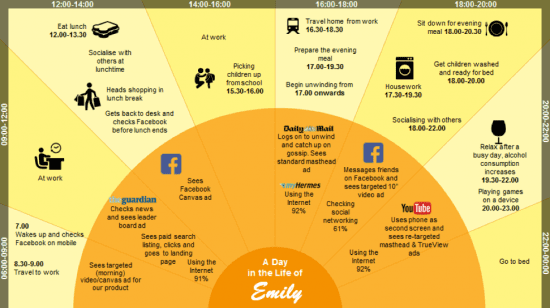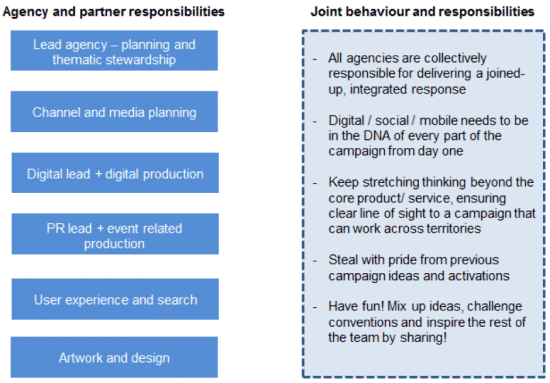Five ideas to help supercharge your marketing brief
The ability to write an effective marketing communications brief can be the difference between a campaign that comes to life and generates the results you’re looking for or one that misses the mark and leaves your audience cold and indifferent.
The IPA outlines three reasons why marketers should write a brief:
- It leads to better work.
A good brief helps ensure that there is clarity around the goals and objectives of the campaign meaning an agency can focus their efforts in the right direction - It saves time and money.
Efficiencies can be made by helping agencies to get to the right ideas more quickly first time round rather than changing the goalposts several times during the process, all of which costs time and money on all sides. - It makes remuneration fairer.
Make it clear from the start what exactly is expected of the agency and how success will be objectively (rather than subjectively) measured.
Key steps to an effective brief
With both agency and client-side experience, I have been writing marketing communications briefs for over 10 years and it’s a process I have never mastered and always trying to improve. There are many great links and resources on how to write a good brief (and I have listed a few of my favourites at the end of this article) so rather than repeating much of this guidance I wanted to instead use this post to provide some personal highlights of elements I have found go into an effective brief, both in terms of the briefing process and the written brief itself.
1. Start with a story
Instead of jumping straight into the objectives, target audience and product/services of focus, I’ve found it useful to start with a story. As Creative Director Howard Margulies mentioned in an AdAge article in 2009:
“When you write a creative brief, you’re not filling out a form. You’re crafting the story of your product and its reason to exist and thrive in the world. This is the first, and arguably the most important, creative act of the entire process”.
To help inspire the agency (or agencies if this is a joint agency briefing), spend some time setting the scene, perhaps with some interesting consumer stories or a similar situation from a different industry or sector to trigger interest and understanding.
2. Bring your target to life
With any briefing there is the danger of restricting your target audience to numbers and letters, e.g. ABC1, 18-40. Whilst this information should absolutely be included it’s worth acknowledging that your audience is made up of real people with likes, dislikes, motivations and lifestyles, so it pays to bring a bit more colour to the explanation of who they are.
Bring your target to life by using examples and stories to describe who they are, what interests and motivates them and the products, services and media they consume. It might be worth using any existing customer personas you’ve developed or create a ‘day in the life’:
3. Outline a clear, ultimate goal
Within the written brief it will be important to detail a number of different objectives including:
Business objectives:
- Increase profit growth by x%
- Increase market share by y%
Marketing objectives:
- Increase sales by x%
- Increase brand recognition by y%;
Communication objectives:
- Increase frequency of consumption by x%
- Increase household penetration by y%
- Increase association with platform/ moment
However, in addition to these very specific objectives, consider setting one really clear, overarching ‘ultimate goal’ to help inspire and shape the agency’s (and your company’s) thinking.
For example, as part of a recent campaign I was involved in we stated that in addition to our marketing objective of increasing sales through awareness and trial, we wanted the launch of our new product to ultimately become the #1 breakfast of choice for ‘morning go-getters’ in place of bananas! It was a very bold and lofty goal but focused our thinking about what we needed to do in order to meet this aspiration.
4. Brief as a group
As digital marketers we may be predominantly focused on the digital element of the brief, however, there’s a good chance any activity will be part of an integrated campaign involving a number of different disciplines, including TV, PR, outdoor and promotions. Bringing all the agencies together as part of a cross-agency briefing has many advantages.
I’ve found this method particularly useful as it enables you as the client to present the brief in person, highlight key areas and field questions along the way. This way of working is also a good way of highlighting roles and responsibilities and encouraging the different agencies and stakeholders to get talking with one another early so they can start thinking about joint responses, e.g.:
5. Be honest about the practicalities and executional mandatories
The briefing process can sometimes be very aspirational, with a lot of time and effort spent selling in the potential gains and opportunity a great campaign can deliver. Nevertheless, it’s always worth being clear about the more practical and prosaic deliverables you’ll require, sometimes known as ‘executional mandatories’. They’re not always glamorous but they’re important to highlight clearly in order to avoid making up for mistakes later on in the campaign itself.
Typical executional mandatories may include:
- Timings and key milestones (for both the agency and the actual campaign)
- Products/ services/ brands, markets, territories etc. in scope
- Specific creative guidance, e.g. “do not copy and paste a TVC for digital!”
- Links to other elements of the brand, e.g. “must integrate with the overarching ‘masterbrand’”
- Approvals: list of stakeholder required to sign off campaign
Three helpful links to briefing best practice resources
As I mentioned earlier on in the post, there are many really useful links, resources and articles on how to produce an effective brief. Here are a few that I have personally found very helpful:
- The IPA’s briefing best practice guide - a professional and comprehensive overview of the briefing process from start to finish.
- AdCraker’s example creative brief - a clear, useful briefing template with examples explaining all the key steps and categories needed to produce a really effective creative brief.
- Hubspot’s 13 questions - Hubspot argue that the key to writing a compelling brief is the ability to ask and answer the right questions.
from Blog – Smart Insights http://www.smartinsights.com/digital-marketing-strategy/digital-strategy-development/brief-marketing-agency/
via Tumblr http://euro3plast-fr.tumblr.com/post/165760974349



No comments:
Post a Comment